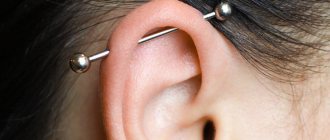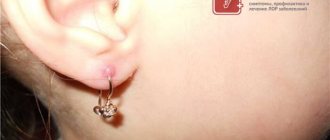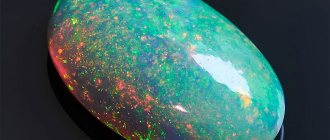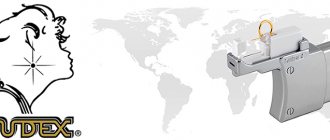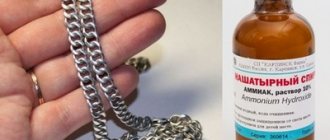Why does it hurt and how painful can it be?
Discomfort during the procedure depends on your pain threshold and the location of the puncture . Some salons offer anesthesia to reduce pain to zero, but we do not recommend doing it unless necessary , because the anesthesia injection is quite painful and is comparable to the puncture itself.
To make the puncture less painful, craftsmen use special laser-sharpened hollow needles. They allow the procedure to be carried out as painlessly as possible.
Professional piercers never use guns for piercing, because they push tissue under high pressure, which results in a lacerated wound. Also, pistols cannot be sterilized in a static machine due to the presence of plastic parts in it.
Does it hurt to pierce your ears with a gun?
The procedure using a special instrument equipped with a disposable needle is the least painful. Modern types of devices are designed in such a way that the puncture is carried out directly by the stem of the earring, which remains in the lobe after a soft click. In this case, the needle turns out to be so thin that it does not pierce the ear, but makes a tiny incision, pushing the skin and cartilage apart. Most clients don’t feel this moment and are even surprised: “What, that’s it already?!!”
The advantages of the procedure using a special gun are not only the absence of pain. Modern piercing tools are:
- 100% hygienic, because the tool is designed in such a way as to prevent contact of the working part with the skin;
- noiselessness - piercing occurs almost silently, the instrument does not make any clicks, shots or other unpleasant sounds that frighten children;
- the ability to make several holes at once in a few seconds - using a special device, you can immediately insert several nails into the lobe and sink without compromising the hygiene of the procedure.
Using the tool, you can make piercings for both adults and children, and not only in the ear. Those who have reached the age of majority are allowed to pierce almost everything with the same advantages - quickly, painlessly, safely.
Where is the best place for a beginner to get their first puncture?
Minimal discomfort comes from piercing the eyebrows and lobe , which heal without any problems. It is a little more painful to pierce Helix and Conch, but they look more interesting. If you are very afraid and worried, you can always consult with a master and ask him all your questions. Perhaps the master will suggest you start with the simplest puncture so that you understand the healing process, and then move on to a more complex puncture.
What you need to know before getting your ear pierced
A puncture is an injury. To prepare for it and not harm yourself, consider the following points Ear Piercing: What You Should To Know / WebMD.
It might hurt
Much depends on your sensitivity and individual pain threshold. Some people hardly notice any discomfort, while others may require local anesthesia - for example, in the form of an anesthetic cream. Whether this applies to you, only you yourself know.
You should not take painkillers before the procedure. But if you still decide to do this, choose products based on ibuprofen or paracetamol. But medications containing acetylsalicylic acid are contraindicated: they thin the blood and can lead to heavy bleeding.
You may notice blood
A little bleeding is normal when your ears are pierced. There is no need to treat the wound with anything: just press a clean, dry cloth onto it for 10–20 seconds.
A puncture can lead to health problems
Here are a few of the most common:
- Allergic reaction. Allergies are especially often triggered by jewelry made of nickel or brass.
- Infections of the skin and other body tissues. They can be recognized by swelling, redness, pain, and discharge that occurs in the area of manipulation.
- Scars and welts at the puncture site. Including keloid (bulging) ones.
- Diseases transmitted through blood. When piercing, if it is not performed under sterile conditions, there is a risk of becoming infected with hepatitis B and C, HIV and tetanus.
You need to take the choice of earrings seriously
Jewelry should have a pointed tip that will fit easily into a freshly pierced hole. Choose lightweight earrings weighing no more than 5 grams and about 10 millimeters long: these options can be worn even if the pierced part of the ear swells slightly.
If possible, buy products made from titanium or surgical steel: these materials are hypoallergenic, reduce the risk of inflammation and, according to Jewerly for initial piercings / Association of professional piercers of the Association of Professional Piercers of the United States, are better than others for the first time. But it is better to avoid gold and silver jewelry: jewelry alloys may contain substances that can cause allergies.
Do you know?
